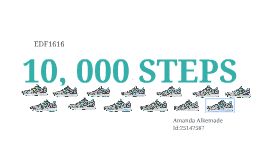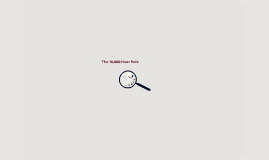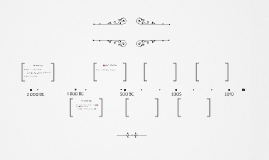10, 000 STEPS
Transcript: Health and wellbeing are important factors in leading a healthy lifestyle (Australian Government, 2009; State Government of Victoria, 2013) and through the World Health Organization's (WHO) Millennium Development Goals, the issue of increasing the healthy lifespan is being addressed. (WHO, 2013). This shows that health and welbeing is an issue that needs to be globally addressed. To adopt a healthy lifestyle, health and wellness must first be achieved. Health and wellness are described by Corbin, Welk, Corbin & Welk (2008) as of “…primary importance to adults in our society” (pg. 2) and are defined. Health is defined as being in a state of optimal wellbeing and is more than freedom from disease and illness, while wellness is defined as a balance and contribution of a number of factors that contribute to ones quality of life (Corbin et. al. 2008). Both wellness and health are multifaceted concepts and a holistic view of them should be drawn upon. These components include social, intellectual, spiritual, occupational, emotional and physical. Amanda Alkemade Id:25147587 The above graph depicts the number of steps taken per day for 16 days as recorded by a pedometer. The blue line represents the base line data, while the red line represents the number of steps taken during the 'action' stage of change. Barriers Reference List INTRODUCTION...continued Conclusion As identified earlier there are a number of barriers concerned with this type of behavior change. The ones identified included friends not willing to take walks and unfavorable weather. There were a number of ways that I attempted to overcome these barriers. When friends were not willing to take a walk, I took the family dog instead, or asked a parent to accompany me. During unfavorable weather I accomplished my step requirement by using indoor spaces such as shopping centers, or ensured a larger number of steps were taken around the house. Unfortunately, there were a number of other barriers that I did not consider before commencing the program. These included illness and injury, and other time commitments the did not allow me to complete the number of steps. Improvements During the course of this presentation, it has been shown that behavior change is much more complex than simply ceasing or beginning a particular behavior. There are 6 steps that are involved in effectively changing a behavior ( 1. precontemplation, 2. contemplation, 3. preparation, 4. action, 5. maintenance, 6. termination) and achieving each individual step may take a prolonged period of time to do. It is completely normal to have stages of relapse throughout the program, however using the SMART goals system these periods of relapse can be overcome, as can any identified barriers. SOCIAL WELLNESS: to achieve this, a person must have the ability to interact with others and establish meaningful relationships. INTELLECTUAL WELLNESS: a person’s ability to learn and use information to enhance the quality of daily life. SPIRITUAL WELLNESS: Is a person’s ability to establish a value and beliefs system and act upon it. OCCUPATIONAL WELLNESS: Recognizes a person’s individual satisfaction and enrichment through work. EMOTIONAL WELLNESS: A person’s ability to cope with daily circumstances in a positive, constructive manner. PHYSICAL WELLNESS: A person’s ability to function effectively through a day’s work, and to use free time efficiently. (Chobdee, 2012; Corbin et. al, 2008) Health INTRODUCTION The behavior that I attempted to alter was achieving a 10,000 step count on a daily basis. I chose this goal because the amount of exercise I was completing was minimal and there is a great deal of research that supports the health benefits of 10,000 steps each day. These benefits can include a greater chance of meeting physical activity guidelines (Le-Maurier, Sidman & Corbin, 2003), lowering blood pressure and cutting cholesterol levels (Ripple, Ward, Porcari & Freeson, 1988) and through the exercise can significantly reduce the risk of cancer (the Fred Hutchinson Cancer Research Centre, 2013). Before attempting to change this behavior I set myself both a product goal using the SMART guidelines, and numerous process goals and barriers. These were as follows; PRODUCT GOAL: To attain a 10,000 step count on a daily basis. PROCESS GOALS: 1. At least 1 day a week walk to the shops instead of driving. 2. Create time for a minimum 3km walk/run each week. 3. Each day that I achieve 10,000 steps for the first five weeks, reward myself with a dessert. 4. Go for a medium paced walk with a friend at least once a fortnight. BARRIERS: 1. Unwillingness of friends to walk 2. Unfavorable Weather Data Collection 10, 000 STEPS Analysis Overall the SMART goal system and the stages of change theory are both effective and practical. The majority of the population would be able to use these tools as they do not require any specialist equipment, nor do they require payment to use. Provided they are used appropriately and are

















